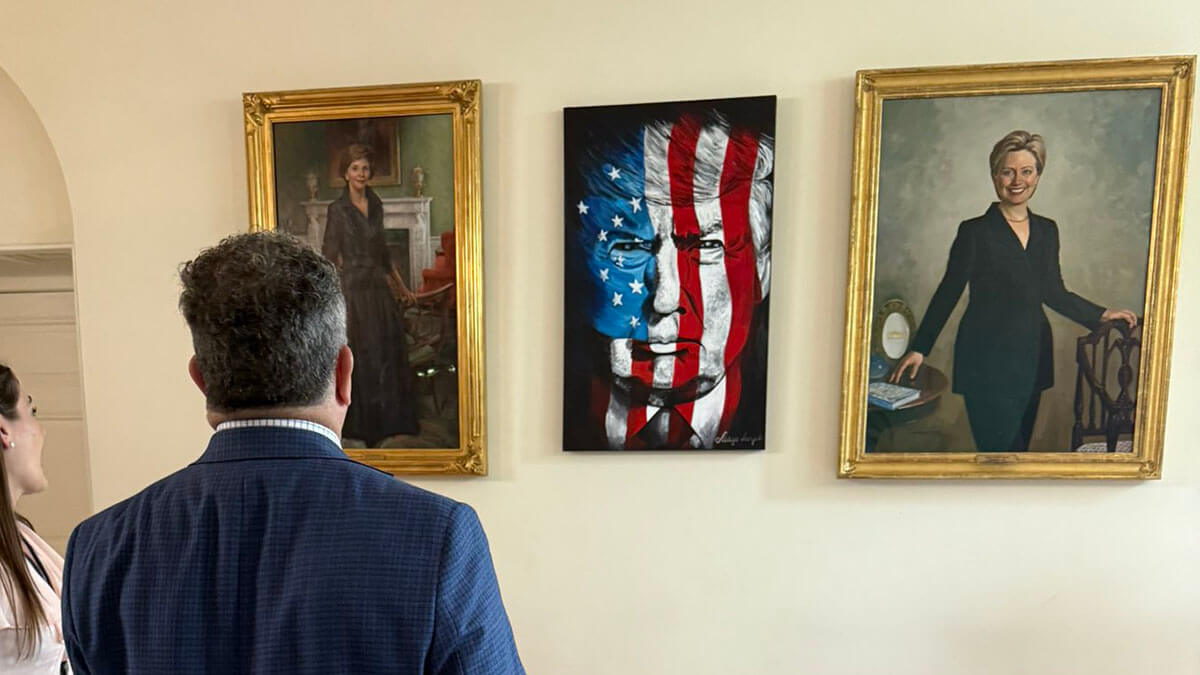The White House has welcomed a new addition to its collection of artwork that has quickly become the centerpiece of conversation both in person and online. In a move that has drawn significant attention, President Donald Trump has strategically positioned a bold, flag-themed portrait of himself between the formal paintings of former Secretary of State Hillary Clinton and former First Lady Laura Bush.
The unveiling of the portrait occurred shortly before Glenn Beck's exclusive "First 100 Days" interview with President Trump, which delved into various policy topics, including educational parental rights and potential Food and Drug Administration (FDA) regulations on synthetic food dyes. However, it was the artwork that stole the spotlight, overshadowing the substantive policy discussions that followed.
Margo Martin, an aide to President Trump, shared images of the new portrait on social media. The photos feature Trump and Beck posing confidently in front of the patriotic painting. Since the posting, the artwork has set social media ablaze with reactions ranging from adulation to criticism.
According to one online supporter, "The painting is classic Trump," referencing the president's fondness for bold imagery and his knack for capturing the public's attention. This new piece of decor, introduced mere months after Trump's January 2025 inauguration, signifies a departure from the White House's more conventional decorative norms and reflects Trump's unique approach to his presidential image.
The choice to display such a striking piece of self-portraiture alongside the more subdued presidential portraits has been interpreted by some as a visual assertion of dominance and a break from tradition. Immediate reactions on social media included comments such as "I see one hell of a patriot in this photo!" and "Love what he's done with the place," demonstrating the polarized views that Trump often elicits.
President Trump is well-known for his trolling antics. In January, he sparked a stir by posting a manipulated video on Truth Social, featuring an AI-generated conversation between himself and former President Barack Obama at Jimmy Carter's funeral. The doctored dialogue showcased the two presidents seemingly discussing Trump's victory over Vice President Kamala Harris in the 2024 presidential race, a moment that fueled widespread speculation about their actual conversation during the event.
Additionally, Trump has made headlines for his campaign's engagement with popular culture figures. Last September, Trump angered Taylor Swift fans by releasing merchandise that appeared to mock the singer's Eras Tour. His campaign account, TeamTrump, announced the new "Trump Era shirt," featuring an array of colorful photos of Trump, pitting the former president against Swift and her fan base, "Swifties."
The placement of Trump's new portrait in the White House has not only captured the attention of social media users but also serves as an emblem of his administration's unorthodox approach to presidential customs and communication. As the reactions continue to pour in, the portrait stands as a testament to Trump's enduring influence on American political and cultural discourse.





